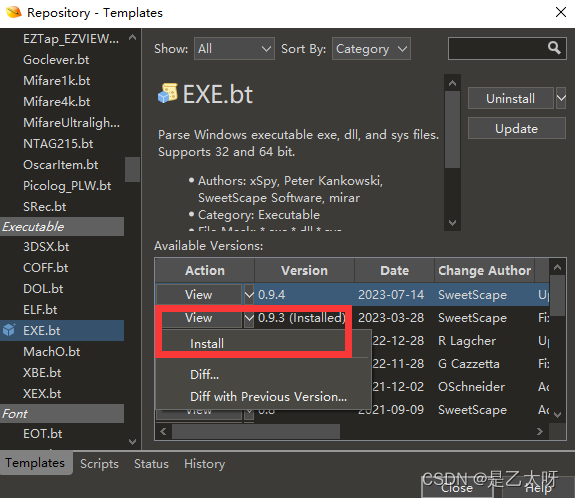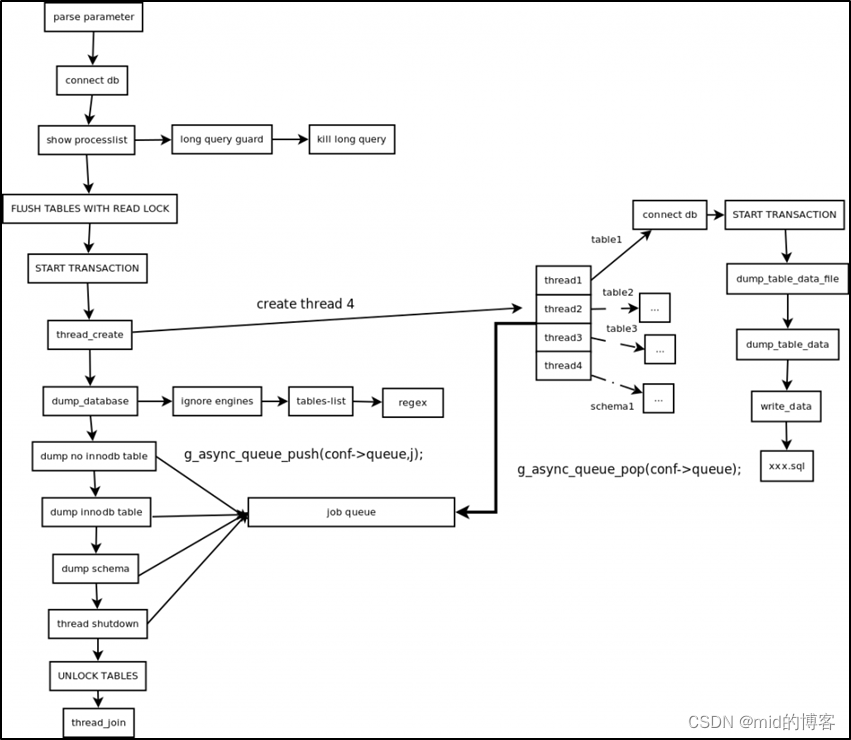上一次的代码结果如下:

当然会有一点点不一样是正常的表现,因为这个图本身使用随机数rand函数做的,用其他两种随机函数出来的结果也不会完全相同。
继上节这次带来的是数组的重塑和转置
1、一维数组的重塑
在NumPy模块中的reshape()函数可以在不改变数组元素内容和个数的情况下重塑数组形状
代码示例如下:
import numpy as np
c = np.array([1,2,3,2,3,4,4,5,6,9,8,4])
o =c.reshape(3,4)
p =c.reshape(4,3)
print(o)
print(p)
其中这里reshape(行数,列数)
结果如下:
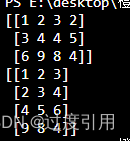
2、多维数组的重塑
这里reshape也可以改变多维数组的形状
import numpy as np
c = np.array([1,2,3,2,3,4,4,5,6,9,8,4])
o =c.reshape(3,4)
p =o.reshape(4,3)
print(o)
print(p)
这里是将上个例子进行改变可以发现还是可以改变的
结果如下:
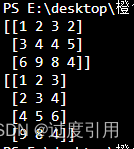
其中将多维数组改编为一维数组也是有办法的
flatten()和ravel()函数
示例如下:
import numpy as np
c = np.array([1,2,3,2,3,4,4,5,6,9,8,4])
o =c.reshape(3,4)
p =o.reshape(4,3)
print(o.flatten())
print(p.ravel())
结果如下:
![]()
数组的转置:
T属性:就是将数组的行和列进行交换
import numpy as np
c = np.array([1,2,3,2,3,4,4,5,6,9,8,4])
o =c.reshape(3,4)
print(o)
print(o.T)
结果如下:
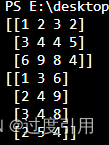
当然有一个与T属性效果相同的函数叫做transpose()
例子如下:
import numpy as np
c = np.array([1,2,3,2,3,4,4,5,6,9,8,4])
o =c.reshape(3,4)
print(o)
c1=np.transpose(o)
print(c1)
结果如下:
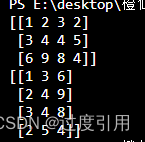
为大家带来一串代码:
def lcs(str1, str2, dp):
len1 = len(str1)
len2 = len(str2)
for i in range(1, len1+1):
for j in range(1, len2+1):
if str1[i-1] == str2[j-1]:
dp[i][j] = dp[i-1][j-1] + 1
else:
dp[i][j] = max(dp[i-1][j], dp[i][j-1])
return dp[len1][len2]
def getlcs(str1, str2, dp):
i = len(str1)
j = len(str2)
res = " "
while(i != 0 and j != 0):
if(str1[i-1] == str2[j-1]):
res += str1[i-1]
i -= 1
j -= 1
else:
if(dp[i][j] == dp[i-1][j]):
i -= 1
else:
j -= 1
return res[::-1]
str1 = "bdcaba"
str2 = "abcbda"
lenA = len(str1)
lenB = len(str2)
dp = [[0 for i in range(lenA+1)] for j in range(lenB+1)]
length = lcs(str1, str2, dp)
print("最长公共子序列长度为:", length)
print("dp表为:", dp)
res = getlcs(str1, str2, dp)
print("最长公共子序列为:", res)




























